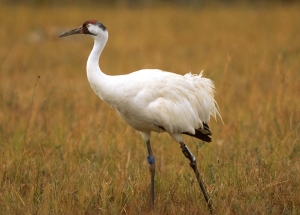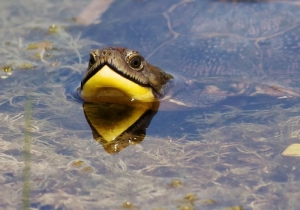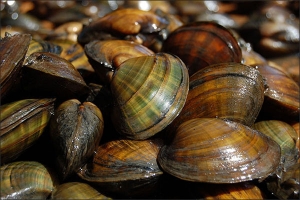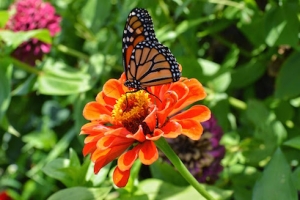Endangered Species List
You have not experienced the true beauty of an eagle until you’ve met one face-to-face. Get to know our eagle ambassadors and plan your next visit to the Center.
While the Bald Eagle was successfully removed from the U.S. Fish and Wildlife Service endangered species list, the existence of other remarkable species remains threatened.
Learn about some of our endangered species and how we can work together to preserve them for future generations.
Want to join our mission? Become a National Eagle Center member and stay up-to-date on how you can help protect our wildlife.

Whooping Crane
Scientific name: Grus americana
The whooping crane is not only the tallest bird in North America, but is also one of the most endangered.
Standing nearly five feet tall, these birds inhabit marshes, shallow lakes, lagoons, and estuaries.
Their population comprised less than 20 individual birds in 1941 that migrated between breeding grounds in Canada and wintering grounds near Aransas, Texas.
While the conservation of their habitat helped the flock increase, the whooping crane remains vulnerable. Recovery efforts include hand-raising whooping crane chicks using puppets costumed to look like adult whooping cranes to avoid them from imprinting to humans.
Today there are more than 600 individual birds in North America in three flocks (in addition to birds in captivity as part of breeding and reintroduction programs).
Learn more:
Blanding’s Turtle
Scientific name: Emys blandingii
This beautiful turtle once inhabited the eastern portions of the US and Canada. Today, however, small populations are found scattered across just a few states.
Weaver Dunes, an extensive area of Mississippi River backwaters, marshes, and sand dunes, is prime habitat for Blanding’s Turtles. However, these turtles face a challenge every year when they head upland to lay their eggs.
The reason? The upland breeding areas are now separated from their backwater habitat by a highway, making their journey increasingly fatal.
Blanding’s Turtles’ late maturity (they don’t breed until about 12 years of age) and low reproductive success rate makes it difficult for this species to recover even in the best of circumstances.
Learn more:
Blanding’s Turtle species profile – Minnesota DNR


Higgins’ Eye Pearlymussel
Scientific name: Lampsili higginsii
These mussels were once common in the Mississippi River but have been considered federally endangered since 1976.
Found in large rivers, they burrow into sand and gravel at the river bottom, opening their shell to siphon for food. Habitat loss has played a part in the decline of Higgin’s Eye Pearlymussels, but the biggest factor by far has been the introduction of the non-native, invasive zebra mussel.
Brought to US waterways through international shipping, zebra mussels colonize any available hard surface, including the shells of other mussels. When zebra mussels attach to a Higgin’s Eye Pearlymussel, they prevent it from moving, burrowing, or opening its shell to feed.
Learn more:
Monarch Butterfly
Scientific name: Danaus plexippus
When monarch eggs hatch, the larvae eat their eggshells and subsequently feed on the milkweed plants they live on.
While milkweed plants were once common near agricultural fields and surrounding areas across the Midwest, it is now in steep decline due to chemical applications on farm fields. The mowing of roadside ditches has also sharply limited the amount of available milkweed.
Pesticide use is also implicated in the decline of monarchs. Pesticides can affect the adult monarch by exposing them to neonicotinoids. Neonicotinoids are an insecticide that can exist in the nectar, pollen, or leaves of a plant months after initial application.
Monarchs and other pollinators can be exposed to lethal doses when feeding on these plants.
Learn more:

How Can You Support The National Eagle Center?
Donate! Your donations help to provide the resources we need to properly care for our current eagles and ensure we have the capacity to take in others. We appreciate every donation and believe that together we can protect the eagles and the land that sustains them.
